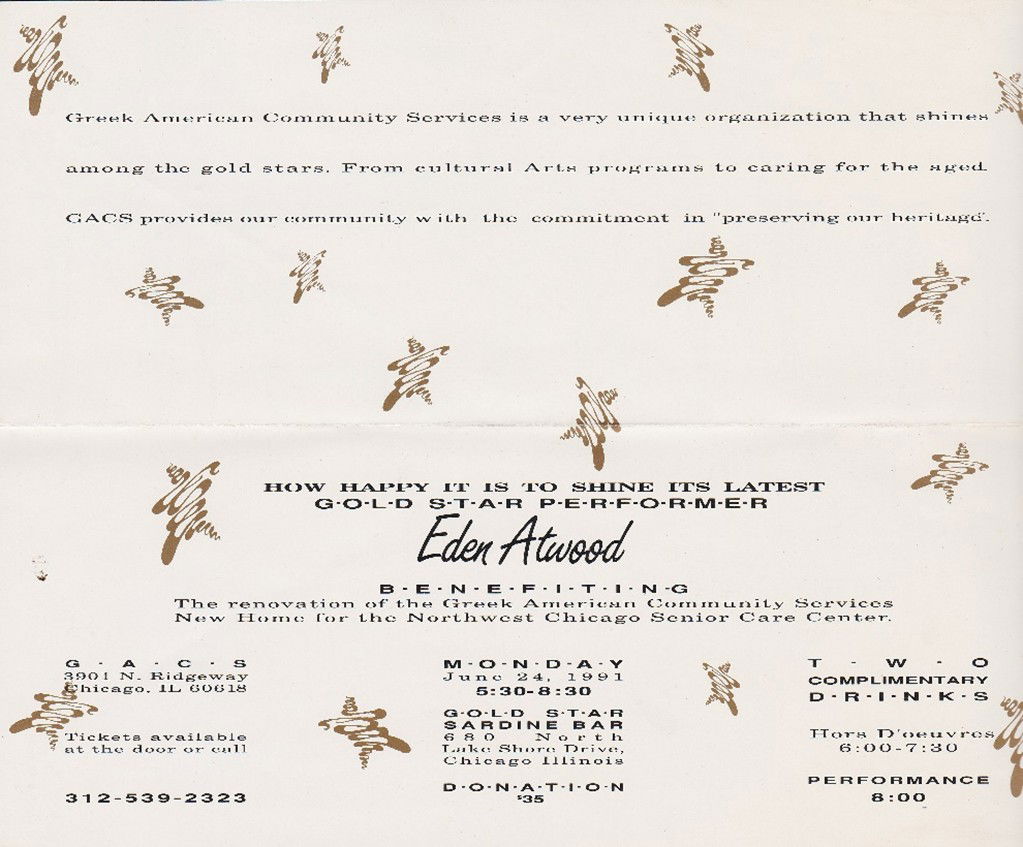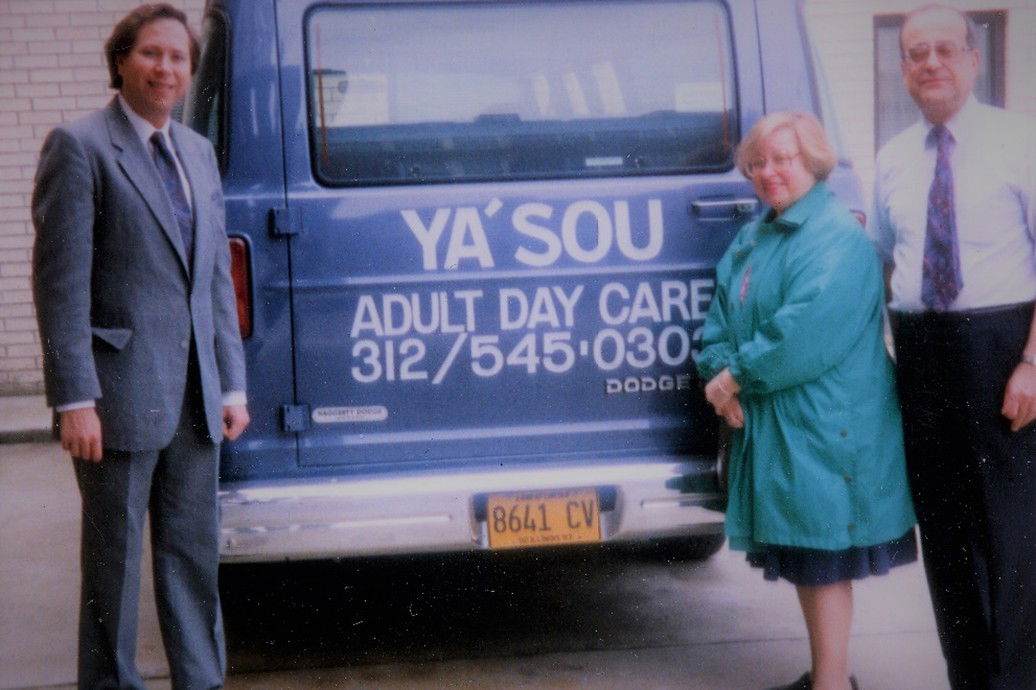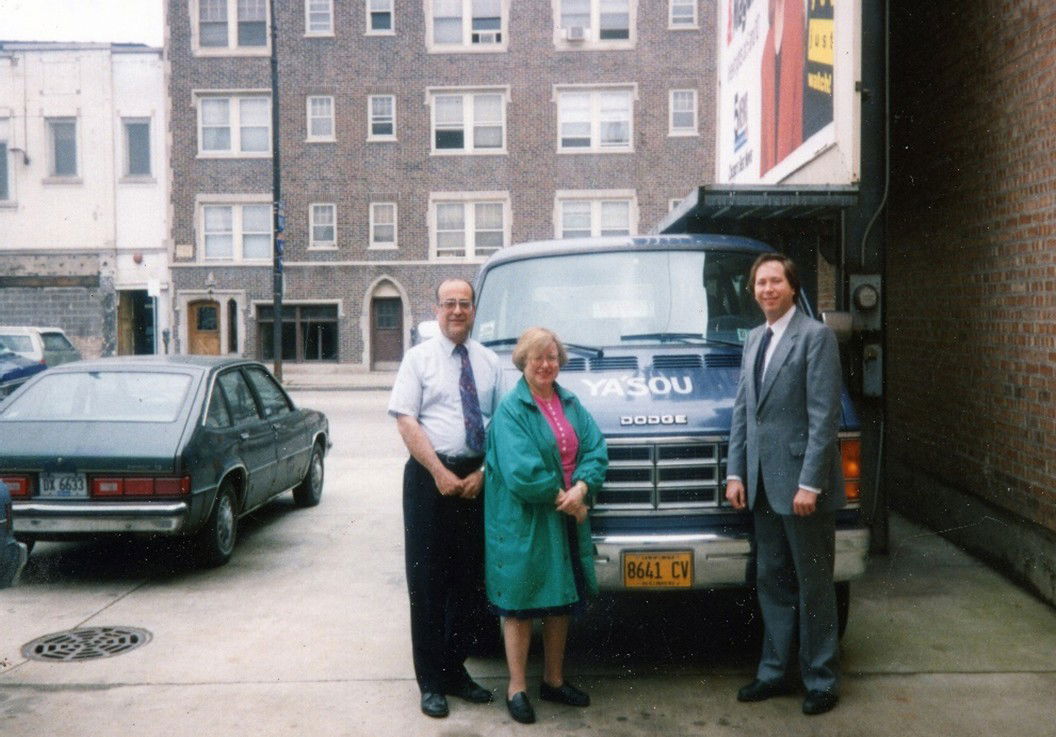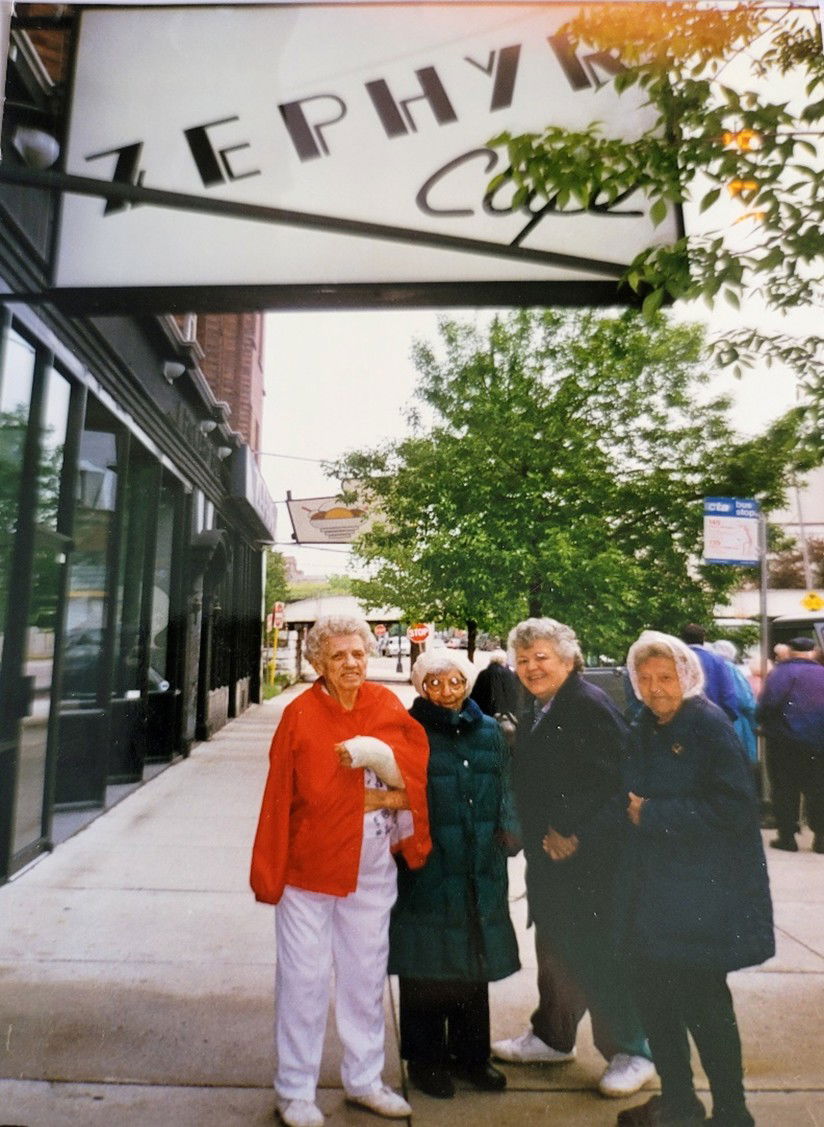Two Steps Forward…One Step Back
From Working to Preserve Our Heritage: The Incredible Legacy of Greek-American Community Services:
It quickly became apparent that an impediment to the center’s growth was the lack of a van to transport participants. Most clients were dropped off and picked up by family members. Those that didn’t have rides were transported by Ethel Kotsovos or other volunteers in their cars.
In the spring of 1991, I approached the Chicago Community Trust (CCT), one of the city’s largest foundations, about the possibility of getting a grant to purchase a van to transport adult day care center clients. Michael Marcus, CCT senior program officer, and Barb Koremenos, an intern with the Trust, arranged a site visit to the center. They were impressed with GACS and the adult day care center and encouraged us to submit a grant request. As we discussed during the visit, the grant request had three components: A direct grant of $20,000 to purchase a van, $5,000 for insurance and to pay for a driver, and an additional $15,000 in matching funds to help cover the operational costs of the adult day care center. The second year would provide $15,000 in funding for the adult day care center and help to cover the cost of the driver and insurance. With Michael’s guidance and institutional support, the grant was approved.
Around this time, Norman Ross, a contributing reporter for ABC 7 Eyewitness News (WLS-TV), who specialized in profiles of people and organizations doing good work, became aware of the adult day care center and wanted to do a story on us. Before retirement, Norman had been a senior vice president for public affairs with First National Bank of Chicago. He was a highly regarded member of local media and the Chicago business community. Ross and his film crew came to the center to tape the segment and interviewed John, Amydelle, and me. The report aired about a week later and was well received. It helped increase awareness about the center within the broader community and generated inquiries from the public.
One unexpected outcome of the broadcast was a phone call I received from Irene Antoniou. She had seen the segment, read our newsletters, and wanted to learn more about us. Irene was a passionate advocate for the arts, having served as president of the Lyric Opera of Chicago Women’s Board and as a member and eventual chair of the Illinois Arts Council. Irene had a keen interest in the adult day care program given that she had been caring for an aging mother who would have benefited from the Greek American center. Irene particularly liked that GACS combined both of these interests and told me she would be donating. The check received a few days later was for $1,000. In the coming years, Irene became a benefactor of GACS.
The Chicago Public Schools needed an additional school in the area, and they saw Alvernia Place as a perfect opportunity. In the spring of 1991, we were notified that the Chicago Board of Education intended to buy Alvernia Place and convert it into a public high school. They had threatened the nuns with eminent domain actions if they did not sell them the building.
Despite the intervention of then-Cardinal Joseph Bernardin, the city held firm in its position. Attorneys for the Order advised the nuns to sell to avoid the protracted legal battle and expense of a court case. Alvernia Place tenants, except for Kid Watch Child Care, were told we would need to move by September 30th.
After having just settled into Alvernia Place, GACS again needed to search for a new location. Several locations were considered including storefronts located in Veterans Square Mall (a strip mall located at Jefferson Park–Lawrence and Milwaukee Avenues-owned by Demetrios Kozonis), a location at Milwaukee Avenue and Sunnyside that became too expensive, a German social hall on Montrose near Hamlin that had no windows and was quite depressing inside and a two-story storefront on Irving Park just west of Cicero that had been a television and appliances store.
We also revisited the location at 3940 N. Pulaski, in the Old Irving Park neighborhood, which had been considered the last time and remained vacant. It was about three blocks from the Alvernia location. The advantages to this location included that it was street level, it was a newly constructed building, and the owner was willing to build it out to our specifications. The negatives included the fact that it was located near an extremely busy intersection and the parking lot layout was less than ideal. To further complicate the parking, a lighted billboard sign was based in the lot and took up valuable parking space.
The building was located on the west side of Pulaski between Irving Park and the entrance/exit ramps to the Kennedy Expressway, which created a near-constant backup of traffic. The plus side was that it was convenient to get to, given the expressway on/off ramps and the Irving Park and Pulaski intersection. Three bus routes and the Blue Line and Metra train stations were all less than one block away. GACS would occupy the first floor. The second floor, with six studio suites, was occupied by several small businesses including a printer and photographer. A three-year lease was signed which included the right of first refusal if the building was sold. Roula Alakiotou, a prominent Chicago architect, designed the interior and also donated the assistance of her firm, Roula and Associates. She created an open floor plan that allowed flexible use with breakout space and offices along the south wall. A hard-wired fire alarm system was installed. Tiles and carpeting were laid, and a kitchen area was added.
The final design included an open area that was about 1,800 square feet, three accessible bathrooms, a nurse’s office, food service areas, five offices, and a meeting room that could also be used as a breakout activity area for adult day care clients. A large coat closet to accommodate thirty-plus participants and their belongings was created under the staircase to the second floor. The reception area at the entrance was used to greet visitors and monitor the front door. A garage area in the back was converted into an open space with wall shelving added for storage.
On June 24, GACS raised an impressive amount at a cocktail party held at the Gold Star Sardine Bar, a trendy but tiny jazz lounge located at 680 N. Lake Shore Drive. The bar was co-owned by Bill Allen, a co-owner of Treasure Island Food Stores. The evening featured a special performance by Eden Atwood, their guest performer. A raffle with a grand prize of a round-trip ticket to Greece donated by Olympic Airways raised additional money.
On July 1, with the help of a small cadre of volunteers, GACS officially moved to the new location. Several volunteers helped to drive things between the old and new locations as Nick Stathopoulos, Bob Blum, John, and I rolled file cabinets on dollies through the side streets from one location to the other! The fact that the move was only a few blocks away was a big plus, but it was still difficult given a heatwave. Alvernia Place felt like a furnace with its long hallways and lack of air conditioning. The humidity was extreme, making moving a far greater challenge than anticipated.
Shortly after GACS set up shop in the new building, we received word that the Chicago Community Trust approved our grant request to purchase a new van and related expenses as well as a challenge grant of $15,000 which provided a dollar-for-dollar match. I went shopping for a van and was able to negotiate a deal with Haggerty Dodge for a sky-blue twelve-passenger 1992 Dodge Ram van. In addition to a discounted price, the dealership donated lettering and an alarm for the van. The van was adorned with the NCSC logo, address, and phone number. In keeping with an idea that came to us after visiting the Council for Jewish Elderly adult day care center and seeing their vans labeled “Shalom,” we added Ya’Sou to the front and rear of our van. We saw it as the perfect name since it had a dual meaning in Greek. On one hand, Ya’Sou is a friendly, informal greeting of hello while it is also a toast or salutation meaning “to your health.”
Once the van was procured, GACS held an “Agiasmos,” or Blessing of the Waters Service and Open House. Very Rev. Nikitas Lulias, chancellor of the Greek Orthodox Diocese of Chicago, presided. Father Nikitas blessed both our new home and the Ya’Sou van. Refreshments were provided by Costas Zografopoulos of Master Caterers. An open house for providers and case managers was held on another day so that they could have an opportunity to see the new location.
With the van ready to go, we hired Robert Blum to be the van driver and Ray Manasingh to be the van attendant. Ray was an Earn Fare participant and when funding allowed, we hired him onto our payroll to continue in this role. Bob had worked at Alvernia Place in building maintenance. He was a student at Wilbur Wright Community College working towards a degree in physical therapy. Bob and Ray also assisted with activities throughout the day. They remained with the center throughout most of its existence. Once the van was in operation, attendance at the center increased, validating our belief that providing transportation was a key component of adult day care. The rough boundaries for transportation were Harlem Avenue on the west to Chicago River on the east and Devon Avenue on the north to Diversey Avenue on the south; however, there were some exceptions made to accommodate clients when possible.

Gold Star Sardine Bar fundraiser invitation. June 1991. John Psiharis collection.


Pictured with the Ya’Sou 2 van in front of GACS shortly after it was purchased. (L-R): Top: John Psiharis, Evangeline Mistaras, and John Rassogianis. Bottom: John Rassogianis, Evangeline Mistaras, John Psiharis. Date unknown. John Psiharis collection.

Nurse Eileen Casey (third from left) with ADC participants (as the Ya Sou vans are boarded in the background) after a lunch outing to Zephyr’s Café. Date unknown. Photo by John Rassogianis. John Rassogianis collection.